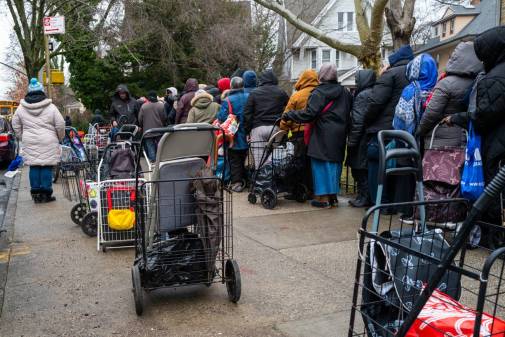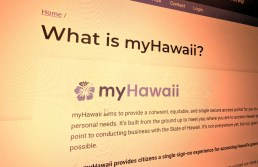Commentary: How no-touch processing is changing state services

No-touch processing has become a holy grail for state health and human services agencies. It refers to the technological delivery of services to citizens at lower cost, requiring fewer resources and, when executed correctly, results in greater citizen satisfaction.
One early step to no-touch processing is the citizen self-service portal, that makes it possible for citizens to apply for benefits and perform many other tasks on their computers or mobile devices instead of visiting an office for face-to-face meetings with case workers.
The citizen portal in some instances is evolving into something more sophisticated — a no-touch processing system that significantly eases the administrative burden on case workers while delivering benefits to citizens quickly and efficiently. It also helps state agencies administer benefits and determine eligibility without the need for a caseworker to “touch” the process at all. Citizens can apply for assistance, have their information validated and receive benefits, all with no, or very little, caseworker intervention.
Expanding programs without adding caseworkers?
How states responded to the additional work brought about by the Affordable Care Act offers a glimpse of how states can add programs without necessarily adding more caseworkers. One large state, for instance, faced a major challenge, needing to expand its state Medicaid program to more than 250,000 citizens. Recognizing that it would need a breakthrough in performance and efficiency, the state decided to pilot a no-touch processing solution, with the goals of simplifying eligibility for Medicaid and migrating from an agency-based model of providing services to a person-centric model. It also aimed to create a flexible technology foundation that could evolve as policies and program needs changed.
The system was deployed over eight months and included a no-touch, near-real-time eligibility system supporting more than 50 health and human service programs. In turn, the system freed up workers from processing applications, and allowed them more time to help citizens in areas that require human interaction.
Doing what technology does best
While no-touch processing aims to make life simpler for citizens and case workers, in reality, the complexity of determining eligibility is still there. It’s just shouldered by the technology platform.
The platform takes applicant information and applies federally defined program rules to determine eligibility while also interfacing with third-party databases to secure verification, including IRS databases and state unemployment registries. Using the system’s ability to quickly analyze large amounts of information, the state in this example has been able to process tens of thousands of benefits applications that have required either no intervention or only one final verification check.
Soon, citizens in need will also be able to use the system to apply for other social service programs that rely on an income test, programs such as Temporary Assistance for Needy Families, or TANF, and the Supplemental Nutrition Assistance Program, also known as SNAP.
Looking ahead
The next stage of no-touch processing will tap into analytics capabilities to help systems better match services with citizens’ needs and problems in context.
For example, an application for food stamps might ultimately be linked to a recent job loss, which would prompt the system to generate a referral for unemployment assistance or job training. Or, a request for Medicaid might be found to have an underlying cause of a non-custodial parent who has failed to provide court-ordered medical coverage, which would trigger a referral for child support enforcement.
No-touch processing is exciting because it can deliver on a key promise of technology, to help streamline operations and deliver better services. While the technology dimension is sophisticated and complex, the goal is simple: to generate better outcomes for the people being served.
With no-touch processing, agencies can increase case worker attention devoted to the needs of citizens, reduce paperwork, errors and fraud, and make real progress in providing human services in a more efficient and effective manner.
Dave McCurley is global managing director for Accenture Software for Health & Public Service.






